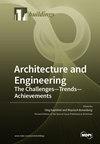利用 3D 激光扫描技术测量具有稳定性和疲劳风险的钢部件的几何特性
IF 3.1
3区 工程技术
Q2 CONSTRUCTION & BUILDING TECHNOLOGY
引用次数: 0
摘要
如今,三维激光扫描技术被广泛应用于钢结构部件的实验室研究中,它可以提供精确的几何尺寸,从而减少实验结果中因几何形状不确定而造成的不确定性。三维激光扫描技术通常与有限元(FE)方法和分析解决方案结合使用,后者是钢结构研究中更为精确的确定性操作方法。然而,为具有稳定性和疲劳风险的复杂钢结构建立一个将三维扫描信息转移或映射到有限元模型的通用方法框架仍是一项长期任务。有鉴于此,本研究开发了一个三维扫描平台,能够获取各种类型钢构件的精确几何尺寸。针对不同类型的组件建立了不同的坐标系和点云映射算法,以构建具有初始缺陷的实际有限元模型。自主开发的三维扫描平台和有限元建模的可行性已通过三个实验案例得到验证:焊接细节、钢梁和圆柱形壳体。研究结果表明,捕捉到的点云可以使用开发的算法进行自动处理和校正。然后,扫描数据可通过各种针对试样特定几何属性的映射算法输入到数值模型中。实验测试结果与三维扫描有限元模型模拟结果之间的差异保持在很小的范围内。自主研发的三维扫描平台和有限元建模技术能有效捕捉不同钢构件的实际尺寸,从而通过数值模拟预测其稳定性和疲劳风险。本文章由计算机程序翻译,如有差异,请以英文原文为准。
Geometric Properties of Steel Components with Stability and Fatigue Risks Using 3D-Laser-Scanning
Nowadays, 3D laser scanning technology is extensively employed in laboratory investigations of steel structural components, providing accurate geometric dimensions to reduce uncertainties caused by indeterminate geometry in experimental results. It is often used in conjunction with the Finite Element (FE) Method and analytical solutions, which are more accurate deterministic operators in the research on steel structures. However, establishing a common methodological framework for transferring or mapping 3D-scanned information into finite element models for complex steel structures with stability and fatigue risks remains an ongoing task. In light of this, this study has developed a 3D scanning platform capable of obtaining accurate geometric dimensions for various types of steel components. Different coordinate systems and point cloud mapping algorithms have been established for different types of components to construct actual finite element models with initial imperfections. The feasibility of the self-developed 3D scanning platform and finite element modelling has been validated through three experimental cases: weld details, steel girders, and cylindrical shells. The research findings demonstrate that the captured point cloud can be automatically processed and corrected using the developed algorithm. The scanned data can then be input into the numerical model using various mapping algorithms tailored to the specific geometric properties of the specimens. The differences between the experimental test results and the simulated results obtained from the 3D-scanned finite element models remain within a small range. The self-developed 3D scanning platform and finite element modelling technique effectively capture the actual dimensions of different steel components, enabling the prediction of their stability and fatigue risks through numerical simulations.
求助全文
通过发布文献求助,成功后即可免费获取论文全文。
去求助
来源期刊

Buildings
Multiple-
CiteScore
3.40
自引率
26.30%
发文量
1883
审稿时长
11 weeks
期刊介绍:
BUILDINGS content is primarily staff-written and submitted information is evaluated by the editors for its value to the audience. Such information may be used in articles with appropriate attribution to the source. The editorial staff considers information on the following topics: -Issues directed at building owners and facility managers in North America -Issues relevant to existing buildings, including retrofits, maintenance and modernization -Solution-based content, such as tips and tricks -New construction but only with an eye to issues involving maintenance and operation We generally do not review the following topics because these are not relevant to our readers: -Information on the residential market with the exception of multifamily buildings -International news unrelated to the North American market -Real estate market updates or construction updates
 求助内容:
求助内容: 应助结果提醒方式:
应助结果提醒方式:


